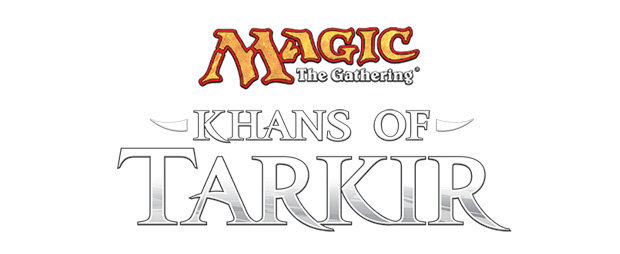When I explain the game of Magic: the Gathering to new players, the first thing I say is that all cards can be divided into two types: spells and lands. Well, actually that's more like the second thing I say, after setting up that it's a duel where each player uses their own deck of trading cards to reduce their opponent's life total to 0 before he or she does the same to you. Or maybe the third, after explaining the different between Creatures are other types of spells and how combat works. But when it's time to get into the mechanics of actually casting spells, I eventually do bring up lands.
A well balanced deck should have a spells-to-lands ratio of somewhere between 1.4 and 1.6 to 1 (depending on the format), despite the fact that the ratio of spells to lands in the entire multiverse is greater than 24:1. (12,142 spells of all types against just 492 distinct lands, but who's counting?) This ratio gets even wackier when you consider that, in most limited formats, the majority of lands that go in your deck are one of the five basic land types: Plains, Island, Swamp, Mountain and Forest.
 Khans of Tarkir, the upcoming set that focuses on five factions that each exclusively use three colors of mana, might be a notable exception to this rule, as the set has a cycle of extremely useful nonbasic lands in common, uncommon and rare (oh my). But that fact didn't stop the designers of Khans from putting a lot of work into making the 20 basic lands (four of each type) interesting in their own right. Each of the five clans of Tarkir has one artist responsible for the art on each basic land (and the nonbasic tri-land) associated with that clan. (This setup might look familiar to those of you who remember the only other three-color set in recent memory, Shards of Alara.)
Khans of Tarkir, the upcoming set that focuses on five factions that each exclusively use three colors of mana, might be a notable exception to this rule, as the set has a cycle of extremely useful nonbasic lands in common, uncommon and rare (oh my). But that fact didn't stop the designers of Khans from putting a lot of work into making the 20 basic lands (four of each type) interesting in their own right. Each of the five clans of Tarkir has one artist responsible for the art on each basic land (and the nonbasic tri-land) associated with that clan. (This setup might look familiar to those of you who remember the only other three-color set in recent memory, Shards of Alara.)The official Magic site had a nice feature article on the basic lands and the tri-lands, but never before have they been organized together with a cool graphic (from the Planeswalker's Guide series) and the banners. Each clan has a primary color (which gets two basic lands) and two secondary colors (one each). So let's take a look at each one in turn and see what we can glean about each clan's personality from looking at where they get their mana.
Starting at the top of the color wheel, we get the Abzan Houses, a desert-based clan that loves outlasting its enemies by always staying ahead in the race to accumulate +1/+1 counters. (It's a pity that the Selesnya and Golgari guilds are rotating out of standard play.) The main feature that dominates all four Abzan basic lands (illustrated by Sam Burley, who also did all five Emissaries from Theros) is a giant fortress in a desolate setting. The high walls surrounded by utter emptiness, save for a few birds here and there, give a sense of the safety that goes along with fortified places. The flavor is clear here, as these definitely look like places that will endure all sorts of hardships.
The lands of the Jeskai Way are all shrouded in mist, which is appropriate for a clan populated with skilled monks known for their martial arts prowess. These places all seem to give the impression of places where deep contemplation and self-discovery are possible. There are also no clearly defined architectural structures, save for the Mystic Monastery (which just is exactly the Potala Palace in Tibet's capital city of Lhasa). You can just picture a serene bald robed figure standing on one leg on any of the outcroppings on Florian de Gesincourt's landscapes (a new artist who has only four non-Khans pieces to his credit so far).
The Sultai Brood's lands are some of the most evocative in the set, many featuring jungle temples and ancient ziggurats that are associated with harrowing sacrificial rituals. This is no accident on the part of artist Adam Paquette (a Magic staple in every set since Innistrad) as many of the clan's most powerful spells require them to delve into a full graveyard. I feel like each of these lands exudes the same sense of foreboding that Marin Sheen's character must have felt as his skiff meandered up the river towards Colonel Kurtz. And that's exactly how I would feel if I found myself heading towards the fearsome Naga inhabitants of Qarsi Palace.
In many ways, the Mardu Horde is the star clan of Khans of Tarkir. Their khan Zurgo was featured in the Speed vs. Cunning duel deck, his throne is one of the most iconic and powerful cards in the set, and his clan's primary color is the color of most Dragons. (Of the 116 creatures with the subtype Dragon in the multiverse, 86 have red as one of their colors.) Noah Bradley's mountains and plains have a sense of openness and emptiness where you would expect to see a Dragon's massive wingspan, but then his swamp serves as a cruel reminder of what happened to the greatest predators Tarkir has ever known. I can't wait to see how the art evolves when (not if) Dragons eventually return sometime later in this block.
I personally like the lands of the Temur Frontier the best out of all five clans, but that might have something to do with the fact that my main EDH deck stars Intet, the Dreamer. I find that Magic rookie artist Titus Lunter's landscapes have the most to offer in terms of texture and atmosphere - you can almost feel the specific mana that would be produced by each of these wintery locations. The snow that pervades the images doesn't necessarily bring to mind the fiery temperament of most dragons. But how can you beat a shelter made out of a gigantic ferocious dragon skull? REI should take note when they're designing their next line of tents for the fashion-forward shaman.
These five graphics illustrate one of the reasons I dig Magic so much: obviously there are distinct differences between the five factions in terms of gameplay, but each one has their own unique feel in terms of flavor and art, aspects of the game that have absolutely nothing to do with how it's played. In a format full of tri-lands, taplands, fetchlands, and mana fixing artifacts, I just hope the Vorthosian time and effort that went into these beautiful basic lands won't be overlooked.






Nice post...I am really liking the coherent flavor across even basic lands.Great commentary.
ReplyDeleteThis comment has been removed by a blog administrator.
ReplyDelete